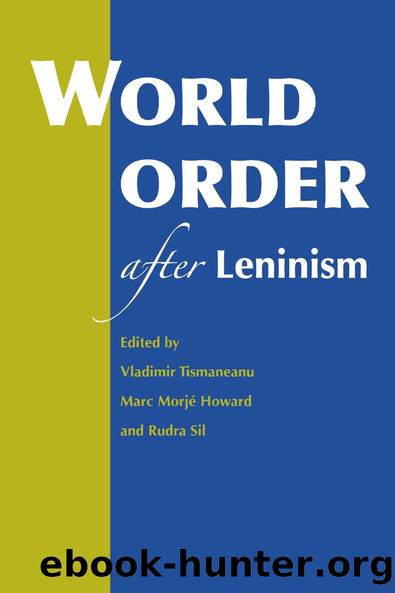World Order after Leninism by unknow

Author:unknow
Language: eng
Format: epub
Tags: History, Russia & the Former Soviet Union, Political Science, Political Ideologies, Communism; Post-Communism & Socialism, Essays
ISBN: 9780295986289
Google: UWOFAAAAMAAJ
Publisher: Herbert J. Ellison Center for Russian, East European, and Central Asian Studies, University of Washington
Published: 2006-01-15T22:15:14+00:00
THE CONSOLIDATION OF POWER
Jowitt argues that once a seizure group has succeeded in conquering political power, the Leninist party elite tries to insulate cadres from potentially contaminating societal and familial interests in order to safeguard the regimeâs transformative capacity. That leads them to put a high premium on cadre obedience. In the stable environment created by the successful conquest of power, daring, autonomous cadres able to use their own judgment in response to unpredictable situations no longer help the party to succeed. Instead, party elites shift their concern to bringing under control partially autonomous cadres who may have begun to develop their own regional bases of popular support. Because they face the task of creating a new set of radically different economic and societal institutions in a hostile and unreconstructed traditional society, Leninist party leaders then want to recruit ideologically trustworthy cadres who will follow central directives. Jowitt labels this period the consolidation stage.
In its dealings with society, instead of responding to popular aspirations, the party tries to reshape not only the economy but also popular culture and societal norms in ways most ordinary people oppose. Party ideology and policy become dogmatic rather than responsive. In the effort to accomplish these tasks, the party becomes more centralized and hierarchical. Leadership narrows and becomes more personalized, according to Jowitt, which limits the points of access for members of society. The security forces become the most important instrument of the regime, and violence is used against cadres and supporters, not just enemies.
Jowitt argues that the consolidation stage distinguishes Leninist regimes from other post-revolutionary regimes. Based on the cases I have examined, it appears that although the particular constellation of features Jowitt attributes to the consolidation stage is uncommon in non-Leninist regimes, a general narrowing of both the regime elite and its societal bases of support occurs after seizure in most other dictatorships, as does a struggle over the personalization of leadership. The consolidation stage Jowitt describes is one possible outcome of this narrowing process, but not the most frequent one. In all kinds of dictatorship, once the seizure group has captured political power, the various incentives that had tended to keep the group collegial change, as do those incentives that impelled the group to maintain broad popular support. As soon as the group is securely in power, the costs of hierarchy are reduced. This does not mean that hierarchy necessarily contributes to regime survival, but only that since it no longer dramatically reduces survival chances, it will tend to develop because it often serves the interests of individual leaders.
Download
This site does not store any files on its server. We only index and link to content provided by other sites. Please contact the content providers to delete copyright contents if any and email us, we'll remove relevant links or contents immediately.
International Integration of the Brazilian Economy by Elias C. Grivoyannis(90618)
The Radium Girls by Kate Moore(11921)
Turbulence by E. J. Noyes(7935)
Nudge - Improving Decisions about Health, Wealth, and Happiness by Thaler Sunstein(7613)
The Black Swan by Nassim Nicholas Taleb(7009)
Rich Dad Poor Dad by Robert T. Kiyosaki(6398)
Pioneering Portfolio Management by David F. Swensen(6226)
Man-made Catastrophes and Risk Information Concealment by Dmitry Chernov & Didier Sornette(5921)
Zero to One by Peter Thiel(5684)
Secrecy World by Jake Bernstein(4640)
Millionaire: The Philanderer, Gambler, and Duelist Who Invented Modern Finance by Janet Gleeson(4374)
The Age of Surveillance Capitalism by Shoshana Zuboff(4208)
Skin in the Game by Nassim Nicholas Taleb(4161)
Bullshit Jobs by David Graeber(4094)
The Money Culture by Michael Lewis(4073)
Skin in the Game: Hidden Asymmetries in Daily Life by Nassim Nicholas Taleb(3929)
The Dhandho Investor by Mohnish Pabrai(3698)
The Wisdom of Finance by Mihir Desai(3649)
Blockchain Basics by Daniel Drescher(3495)
